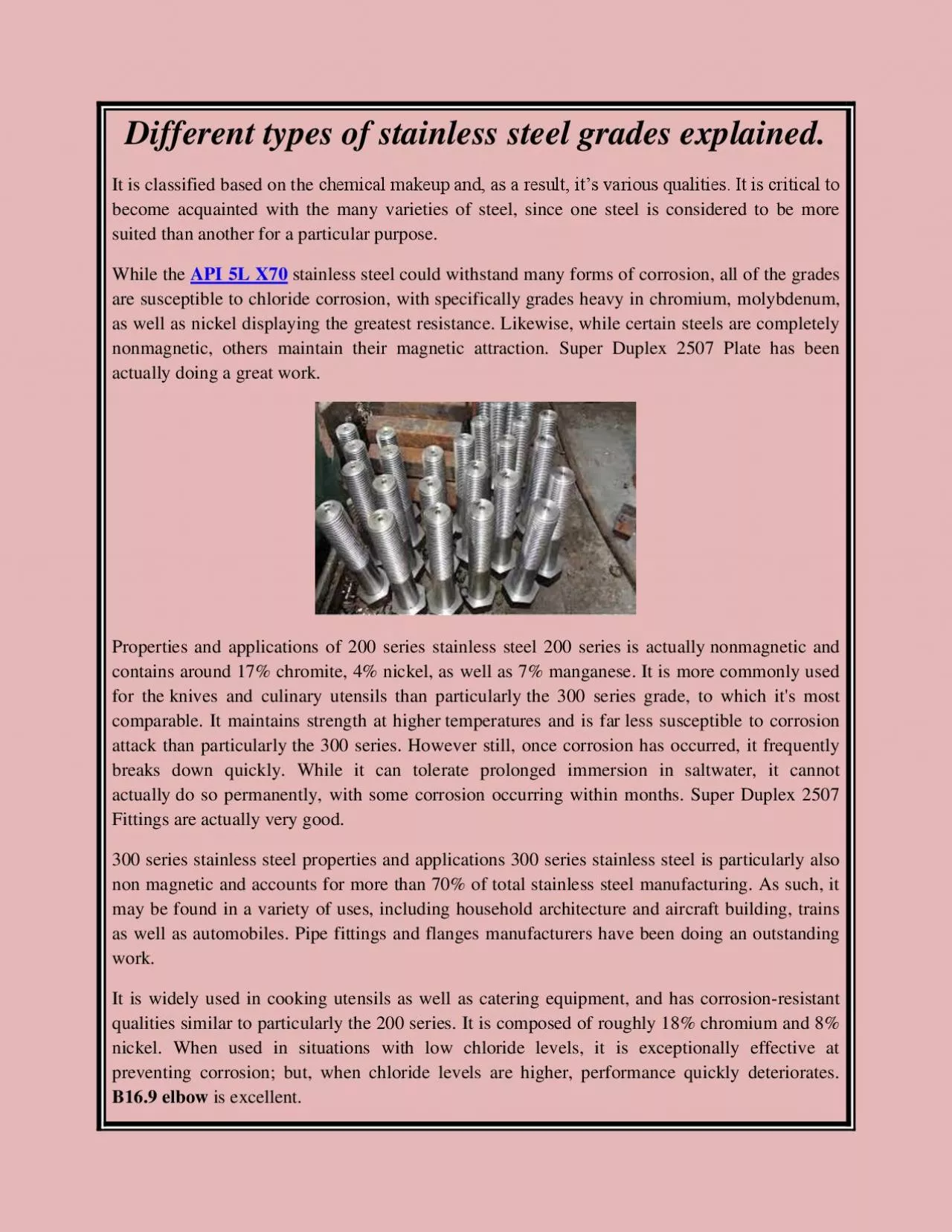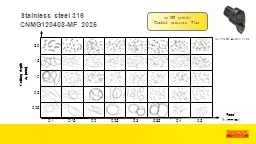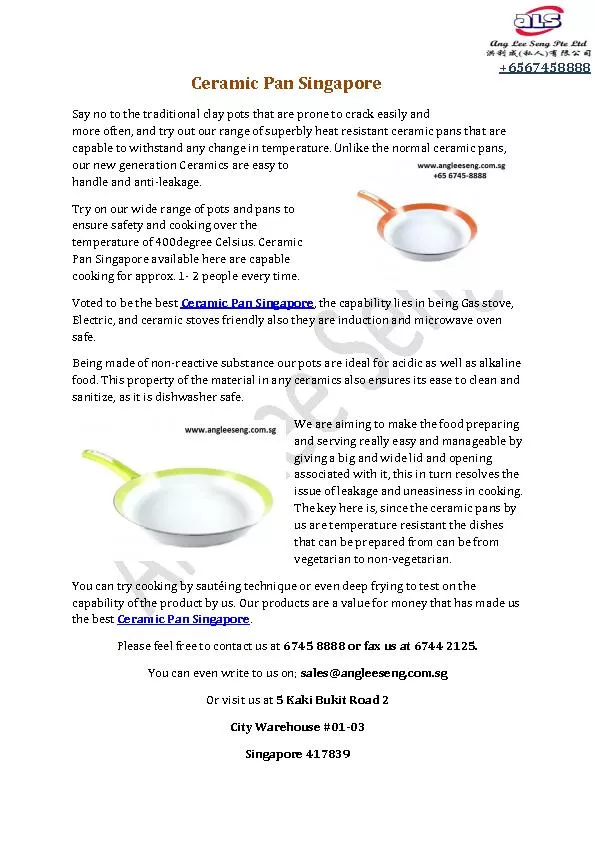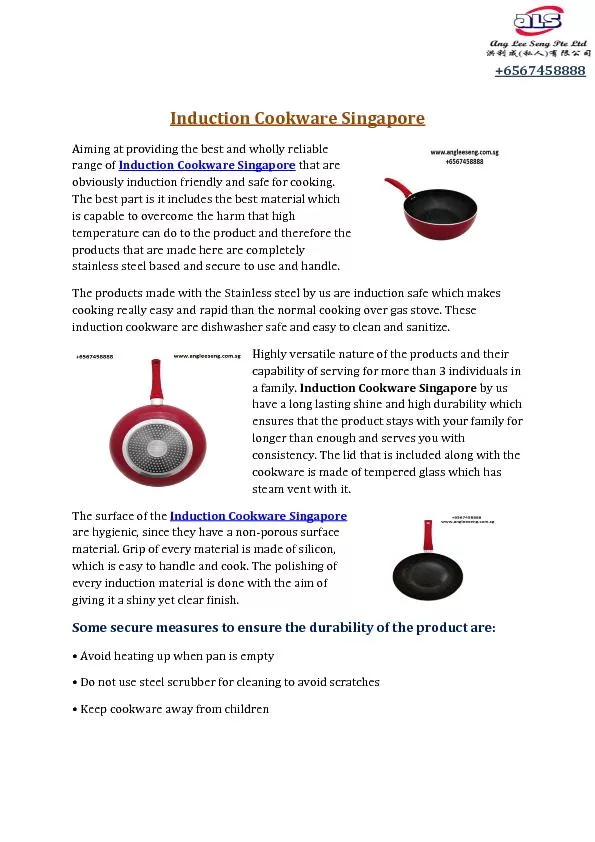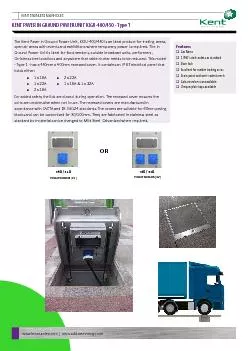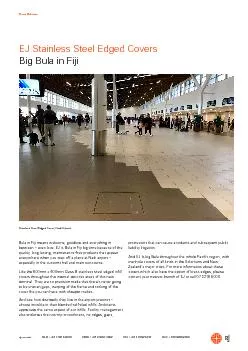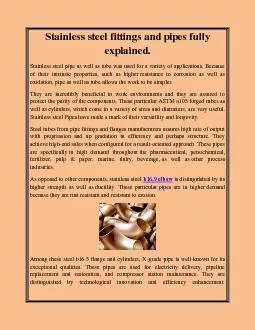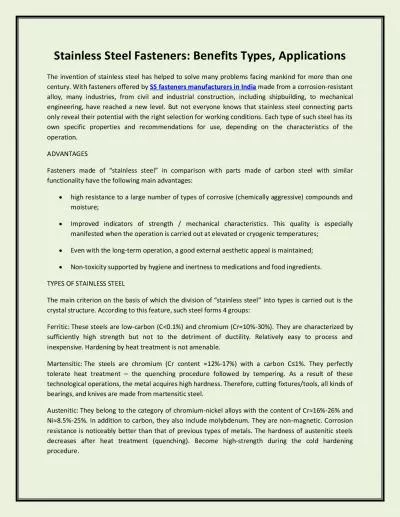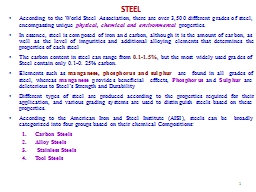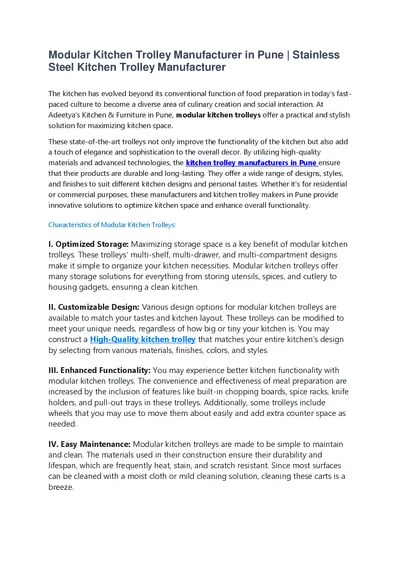PDF-Different types of stainless steel grades explained.
Author : gatlingenesis | Published Date : 2021-09-25
It is classified based on the chemical makeup and as a result its various qualities It is critical to become acquainted with the many varieties of steel since one
Presentation Embed Code
Download Presentation
Download Presentation The PPT/PDF document "Different types of stainless steel grade..." is the property of its rightful owner. Permission is granted to download and print the materials on this website for personal, non-commercial use only, and to display it on your personal computer provided you do not modify the materials and that you retain all copyright notices contained in the materials. By downloading content from our website, you accept the terms of this agreement.
Different types of stainless steel grades explained.: Transcript
Download Rules Of Document
"Different types of stainless steel grades explained."The content belongs to its owner. You may download and print it for personal use, without modification, and keep all copyright notices. By downloading, you agree to these terms.
Related Documents

